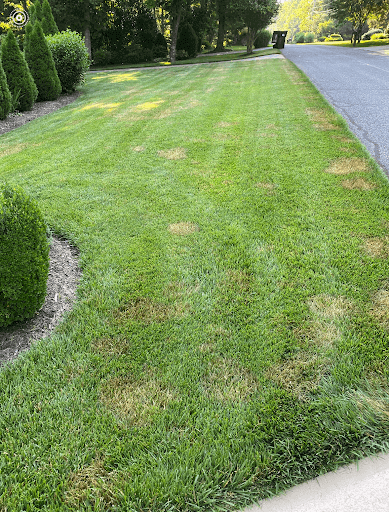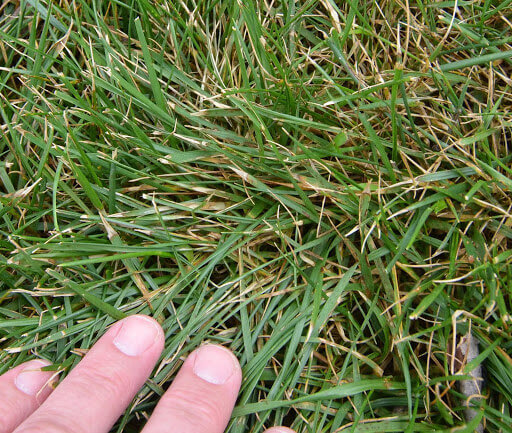Make the transition from spring to summer a smooth and effective one for your lawn.
To keep up with warm-season turf updates and demands, we’ve created this all-in-one overview.
Fairway Green is seeing many cases of winter injury/damage on warm-season turf. It’s affecting Bermuda, St. Augustine, zoysia and centipede, with the latter two appearing to have the most damage/injury this year. Turffiles, one of NC States Crop Science division’s websites, recently published a lot of great information on the topic. Their coverage includes the impact of climate, disease and more on current warm-season turf circumstances.
All warm-season turf should start actively growing by this month. Typically, Bermuda and zoysia spread much faster than centipede, and centipede cannot be pushed with fertilizer to get it to spread faster. In any case, fertilizer will not help turf green up unless it’s ready to start actively growing.
Corrective action from any damage will depend on the extent. Sod may be the best approach if the damage is extensive but, in particular, Bermuda and zoysia will generally fill back in with a proper fertility program if the damage is not severe. Please keep in mind, it is difficult to know the full extent of injuries until dormancy is completely broken (which may not happen until later this month for your lawn). Depending on the air, ground temperatures and the amount of sunlight your lawn received, the exact timing can vary—especially with the cool spring temperatures deep into May we saw.
Once warm-season turf is actively growing, it’s time to consider core aeration. Completing this annual management practice between June and August can drastically improve the quality of your overall lawn. It involves creating small holes in your soil (done by removing thatch and soil), which is especially helpful for your lawn if it received winter damage.
Core aeration will:
Summer is turf-disease season for cool-season grasses, especially Brown Patch Fungus. While it’s common, it can also be devastating. It typically starts in late April/early May due to certain climate factors. This includes when temperatures go above 75 degrees with high atmospheric moisture. This moisture can be in the form of rainfall, irrigation or humidity.



The easiest way to identify Brown Patch Fungus is to stand away from your lawn. Then, look for a shadow appearance on it or browning circles. Once you identify these, look at the leaf blades for tan or brown lesions. If you see these, you more than likely have Brown Patch Fungus. Just a note that drought stress can be mistaken for this fungus, too (drought stress makes leaf blades fold at the center, giving them a straw-like appearance).
Applying fungicides preventively offers better control and less turf damage vs. curative fungicides. An application will control fungus for approximately 25-28 days at a time. Due to the high humidity level in NC, Brown Patch can go active again after this time. Many people are utilizing our preventative fungicide program to prevent major damage to their turf and take the guesswork out of when to do applications.
Regularly empty standing water from areas that collect it; otherwise, they can promote mosquito growth and reproduction.
Some areas to consider:
We all know mosquitos transmit diseases like West Nile virus, encephalitis, chikungunya and zika. Fairway Green’s season-long mosquito control program can help control mosquitos, giving you and your family peace of mind. Each treatment will help control mosquito activity for approximately 2-3 weeks.
Proper mowing height is essential for proper turf health, performance and weed management. Here’s how to keep your specific lawn type at the height it needs to be.
For cool-season turf, mowing season is officially underway. Proper mowing height will help you control and prevent weeds. For fescue, research has proven that maintaining a mowing height of 3½ “- 4” can drastically reduce crabgrass. Mowing at this height will also help promote healthy turf and hold back broadleaf weeds.
Many warm-season turf lawns struggle to thrive due to improper mowing heights. Mowing your type of warm-season turf properly will drastically improve its overall quality and appearance.